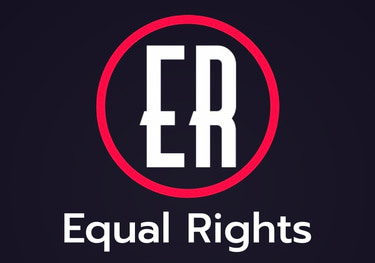Accessible Climate Solutions:
Ensuring Inclusivity in Green Innovations
Kylo B
6/14/2024
Accessible Climate Solutions: Ensuring Inclusivity in Green Innovations
Climate change is a global crisis that affects everyone, but its impacts are disproportionately felt by marginalized and low-income communities. These communities often have the least resources to adapt and respond to environmental changes.
To address this disparity, it is crucial to ensure that sustainable technologies and climate solutions are accessible to all.
This article investigates how to make green innovations inclusive and beneficial for every segment of society.
The Need for Inclusive Climate Solutions
Disproportionate Impacts on Marginalized Communities
Marginalized and low-income communities are often the most vulnerable to the effects of climate change.
These impacts include extreme weather events, rising sea levels, and deteriorating air quality.
Such communities typically lack the financial resources, infrastructure, and political power to effectively respond to these challenges.
Geographical Vulnerability: Many marginalized communities live in areas more susceptible to environmental hazards, such as flood-prone regions, industrial zones with high pollution, and areas with inadequate infrastructure.
Economic Constraints: Limited financial resources hinder the ability of these communities to invest in resilient infrastructure, relocate from high-risk areas, or access clean energy solutions.
Health Disparities: Poor air and water quality, exacerbated by climate change, disproportionately affect the health of low-income and marginalized groups, leading to higher rates of respiratory and cardiovascular diseases.
Barriers to Accessing Sustainable Technologies
Financial Barriers
The high upfront costs of many sustainable technologies, such as solar panels, electric vehicles, and energy-efficient appliances, are a significant barrier for low-income households.
Even though these technologies often result in long-term savings, the initial investment is prohibitive for many.
Information and Awareness
Lack of information and awareness about available green technologies and their benefits can prevent marginalized communities from adopting these solutions.
Misinformation and lack of trust in new technologies also play a role.
Infrastructure and Support
Inadequate infrastructure and lack of support services, such as maintenance and technical assistance, can discourage the adoption of sustainable technologies.
Rural and underserved urban areas often lack the necessary infrastructure to support green innovations.
Strategies for Making Green Innovations Inclusive
Financial Incentives and Support
Subsidies and Grants: Governments and organizations can provide subsidies, grants, and low-interest loans to help low-income households afford sustainable technologies. Programs like weatherization assistance and rebates for energy-efficient appliances can make a significant difference.
Community Investment Funds: Establishing community investment funds can help pool resources to support green projects in marginalized communities. These funds can be used for installing renewable energy systems, improving public transportation, and enhancing local infrastructure.
Education and Outreach
Awareness Campaigns: Conducting targeted awareness campaigns can educate marginalized communities about the benefits of sustainable technologies and available financial support. Collaborating with local leaders and organizations can enhance the effectiveness of these campaigns.
Training Programs: Providing training programs on the installation, use, and maintenance of green technologies can empower communities to adopt and sustain these innovations. These programs can also create job opportunities in the green economy.
Policy and Advocacy
Inclusive Policy Making: Policies should be designed with input from marginalized communities to ensure they address specific needs and barriers. This participatory approach can lead to more effective and equitable solutions.
Regulatory Support: Implementing regulations that require or incentivize the adoption of sustainable technologies in low-income areas can help bridge the gap. Examples include mandates for renewable energy installations in affordable housing projects and support for community solar programs.
Technological Innovations
Affordable Solutions: Developing and promoting low-cost sustainable technologies can make green innovations accessible to a broader population. Innovations such as low-cost solar kits, energy-efficient cookstoves, and affordable water purification systems can have a significant impact.
Local Manufacturing: Supporting local manufacturing of green technologies can reduce costs and create jobs within communities. This approach can also ensure that technologies are tailored to local needs and conditions.
Infrastructure Development
Building Resilient Infrastructure: Investing in resilient infrastructure, such as flood defenses, green spaces, and sustainable public transport, can protect marginalized communities from climate impacts and improve their quality of life.
Enhancing Access: Ensuring that sustainable technologies are available in rural and underserved urban areas is crucial. This can be achieved by improving distribution networks and providing local support services.
Case Studies of Inclusive Green Innovations
Community Solar Projects
Community solar projects allow multiple households to share the benefits of a single solar installation.
These projects can be particularly beneficial for low-income households that cannot afford individual solar panels or do not have suitable rooftops.
Community solar projects can reduce energy costs and increase access to clean energy.
Affordable Electric Vehicles (EVs)
Initiatives to make electric vehicles more affordable and accessible include government incentives, such as tax credits and rebates, and programs that provide low-interest loans for EV purchases.
Car-sharing programs and the development of affordable EV models also contribute to broader adoption.
Green Affordable Housing
Programs that integrate sustainable technologies into affordable housing developments can provide low-income families with energy-efficient homes.
These programs often include solar panels, energy-efficient appliances, and green building materials, resulting in lower utility costs and improved living conditions.
Ensuring that sustainable technologies and climate solutions are accessible to all is essential for addressing the disproportionate impacts of climate change on marginalized and low-income communities.
By implementing financial incentives, educational outreach, inclusive policies, and innovative technologies, we can create a more equitable and sustainable future.
Embracing these strategies not only promotes environmental justice but also strengthens the resilience and well-being of all communities.
